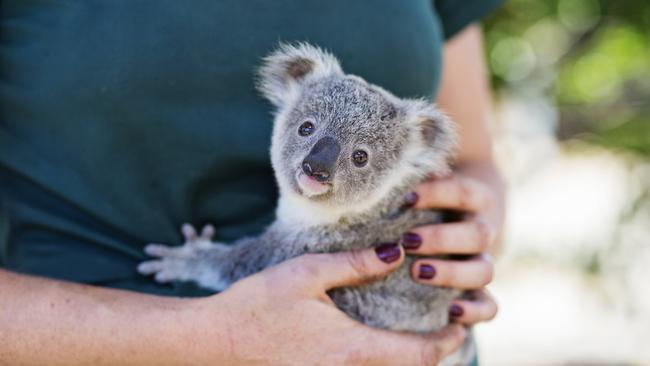NRMA a leading example of how to be ‘brand smart’ in a crisis

The blue-and-white tile says: “Trained marketers know more than shit ones, and this is one of those moments where it counts.”
Roughly half of the marketers in Australia and elsewhere have a decent formal training in marketing. And the other half have blundered into the profession and bluff their way through with a combination of bravado and the regular use of Google’s search function.
The “moment” I was referring to in my talk /tile was the coronavirus pandemic and the ensuing recession that now follows it.
While COVID-19 is a human tragedy, and we must acknowledge that above all other things, it is also a pivotal moment for every brand and an opportunity for marketers who know what they are doing to lead from the front and reap the commercial rewards.
When marketers face a major period of change, they can do one of two things. They can hunker down, cut the budget and wait for the storm to pass. Or they can go onto the front foot, increase marketing investment and attack the crisis head on. That latter path, the harder one, is important because we know from history that brands which take this option will not just survive the crisis in better shape, they emerge into the growth period that follows it in a superior position too.
Watching Brent Smart, the chief marketing officer at IAG, in action these past few months has been a salutary lesson in how to do it right. Smart runs a crack team of marketers who manage a suite of insurance brands — most notably the NRMA.
NRMA was already on a growth trajectory. Careful positioning around “help is who we are” and the tactical focus on koalas and their plight during last summer’s bushfires had successfully connected with the brand’s target markets. The ad featuring a young boy rescuing a stranded koala became one of the most effective commercials of 2019.
But as the COVID-19 crisis lumbered into view, there were major questions about how a big insurer should respond. Like most insurers, NRMA’s business started to fall of a cliff as toilet paper and rice replaced car insurance in the minds of most consumers.
That sudden dip in most businesses saw many companies drop price and switch to promotional marketing to try to drive revenues. But Smart took another approach. Rather than push short-term marketing, he put all NRMA’s money into long-term brand building.
Thanks to the empirical insights of marketing legends Les Binet and Peter Field, marketers now think about both the long and the short of it. The long is mass-targeted, emotional brand building. The short is sales-focused, product-based activations that immediately increase revenues. The former builds brand equity, the latter exploits it. And by combining both — in a mix of roughly 60/40 — brands make the most money.
What Smart realised was that there would be little point in running the usual short-term insurance campaigns. Instead, a brand that was positioned around help should communicate that clearly to the market. So Smart shifted all his marketing money into long-term brand building.
While many brands opted to go dark or cut back their advertising, Smart increased his media budget for the April quarter by 68 per cent.
Where the money went also changed. Usually, NRMA, like most leading brands, spreads its money across a wide range of different channels. But with the focus on brand building, most of that marketing spend went to television and digital video. The combined impact of more media money and a focus on these channels enabled NRMA to increase its reach to 65 per cent of the market and improve digital impressions by a whopping 75 per cent.
And then there was the content question. Many brands paused long-running campaigns in March for bland, ineffective statements of support. Smart did not want to throw the branding baby out with the COVID-19 bathwater. He maintained the distinctive NRMA codes — the HELP message and the koala — and used them to tell a new but familiar story.
Using existing footage from earlier campaigns, an ad was created in which the young boy who had rescued the koala was now shown in lockdown with his mum. The great Jack Thompson added a reassuring voiceover, and the ad was launched on March 29.
It took NRMA just 10 days to reassign budgets, buy new media and create their new campaign.
A quarter later, the results speak to the power of proper marketing. NRMA’s brand-tracking scores are at all-time highs.
According to Roy Morgan, NRMA is among the five most trusted Aussie brands during the COVID-19 crisis. And those softer metrics have translated into business growth. When NRMA began to reinvest in shorter-term marketing activations, the response was stunning. Anticipating that many customers would be forced to cancel their existing insurance policies in the face of the recession, NRMA launched a simple $10-a-month third-party fire and theft policy. The company is currently selling more than 13,000 of these a week, compared to the 3000 they usually achieve.
But the big win for NRMA comes after the crisis, not during it. Recessions are a crucible of change for customers. Keep your wits and maintain your marketing spend, and you survive the recession intact and then prosper in the green fields that come next.



Last week, I was sent a picture from Holland. A senior marketer over there had taken something I had said in a recent marketing talk, immortalised it on a rather lovely ceramic tile and then put it up in the middle of his company’s HQ.